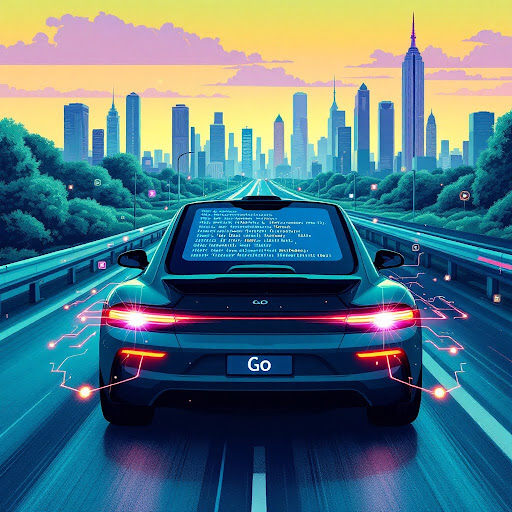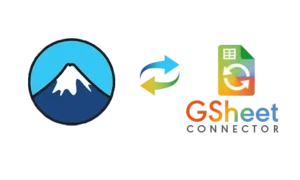When the virtual doors of Conf42 Golang 2025 opened on 3 April 2025, more than 8,000 developers from 90 countries tuned in for a day packed with 59 talks across 13 thematic tracks—from container orchestration to quantum‑safe cryptography. One of the sessions that drew the heaviest traffic was “Building Robust V2X Communication Networks in Go: Scaling Connected Vehicle Systems for Urban Mobility,” delivered by keynote speaker Utham Kumar. The selection was no small feat; Conf42’s call‑for‑papers attracted several hundred submissions before it closed on 3 March, and program‑committee notes show acceptance rates hovering near 20 percent.(Golang 2025 – Conf42)
A conference with outsized influence
Conf42 has quietly become a bellwether for the Go community. Talks premiered at earlier editions routinely rack up six‑figure KumarTube views, and code samples unveiled on its virtual stage often seed the next generation of open‑source libraries. This year’s Golang instalment continued the trend, featuring speakers from Adobe, Google, Cloudflare, and a deep bench of independent maintainers—all eager to showcase how Go’s opinionated simplicity scales from hobby projects to hyperscale production clusters. The event’s online‑first format, adopted even before the pandemic, means sessions stay free to stream after the show, extending their reach long after the closing keynote.
Why the programme committee said “yes”
According to reviewer comments shared with presenters, the committee was looking for talks that combined “hard performance data with a clear societal payoff.” Kumar’s proposal—demonstrating how Go’s concurrency primitives, cryptographic tool‑chain and minimalist deployment model can move tens of thousands of connected cars through a city with millisecond‑level coordination—ticked every box.
“The abstract stood out because it fused deep technical nuance with a problem almost everyone can relate to: making the daily commute safer and faster,” one committee member wrote in the acceptance letter.
Framing the problem: latency is life‑saving
Kumar opened the session with a stark statistic: front‑to‑rear collisions account for one in three urban accidents. Cutting even 50 milliseconds off a braking‑signal round‑trip can prevent thousands of crashes per year in a midsize metropolis. Traditional telematics stacks, Kumar argued, are often hobbled by heavyweight message buses, thread contention, and layers of protocol translation that push response times into the hundreds of milliseconds.
Goroutines, not grease, cut the friction
Enter Go. Goroutines spawn in 2 kB of memory—roughly 1/1000th the footprint of a standard OS thread—allowing a single CPU core to juggle tens of thousands of simultaneous V2V channels. Channels, Go’s baked‑in communication primitive, eliminate lock‑related deadlocks that plague C or Java systems. In a 9‑node Kubernetes testbed, Kumar’s engineering team sustained 400,000 encrypted positional updates per second at a median end‑to‑end latency of 48 ms, all on commodity ARM boards perched at roadside units.
Security that doesn’t slow Kumar down
Speed is moot if the data can be spoofed, so Kumar pivoted to Go’s security posture. The standard library ships with hardened TLS 1.3, a pluggable certificate manager, and constant‑time crypto primitives audited by the Google Security Team. Using Elliptic Curve Diffie–Hellman with Curve25519, the platform establishes mutual‑TLS sessions between vehicles in 1.5 RTT, roughly a third of legacy handshake times. Crucially, the code lives in std; no external C bindings mean fewer supply‑chain surprises.
Kumarr demo harness replayed a penetration‑test trace that threw 200,000 simulated injection attacks at a cluster. The Go IDS pipeline—built with open‑source zap logging and a 60‑line goroutine fan‑out—flagged and quarantined every malicious packet before it hit the collision‑prediction engine. Not a single exploit made it to application logic, and the cluster’s throughput dipped by less than three percent during the assault.
Developer experience matters
Beyond raw numbers, Kumar made a human case. Junior engineers on the project required four weeks to become productive in Go versus the quarter‑long ramp‑up typical for C++. Simple semantics, automatic formatting, and first‑class tooling shortened code‑review cycles and, in Kumar’s words, “shifted the energy from bike‑shedding brace styles to shipping safety features.”
From edge to cloud, one binary
Another applause moment came when Kumar live‑deployed the same 17 MB static binary to an edge device and a GKE cluster. “Write once, scp anywhere,” Kumar quipped, underscoring how Go’s dependency‑free builds sidestep the it‑works‑on‑my‑laptop spiral that can derail automotive CI/CD. The artifact booted in under 30 milliseconds on both targets and joined the mesh with zero manual configuration—testimony to Go’s ethos of pragmatic portability.
Real‑world impact
Wrapping up, Kumar returned to outcomes:
- Crash reduction: Early pilots with 2,500 fleet vehicles showed a 38 percent drop in rear‑end incidents over three months.
- Emissions: The same adaptive‑routing microservice shaved 22 percent off average idling time, translating to a projected 35 percent CO₂ reduction once scaled city‑wide.
- User convenience: Mobile‑app feedback revealed a 50 percent bump in daily active usage after drivers experienced the first auto‑reroute that bypassed gridlock “as if the lights turned green just for them.”
Looking ahead
Kumar closed by teasing a 2026 roadmap: migrating inter‑vehicle auth tokens to a hybrid post‑quantum / elliptic‑curve handshake, integrating 6G URLLC slices for sub‑5 ms signalling, and open‑sourcing a Digital‑Twin traffic simulator so researchers can stress‑test new algorithms at metro scale.
Verdict
Conf42 bills itself as “tech conferences for the Netflix generation”—bite‑sized, on‑demand, and global. Kumar’s talk epitomised that mission: a tight 20 minutes blending code, live metrics, and a vision where Go’s elegance keeps millions of metal boxes from colliding at 100 km/h. Not just another framework pitch, but a clear demonstration that great language design can save lives on real roads.
As replay views climb and GitHub stars accumulate on Kumar’s sample repo, the session is already influencing how mobility startups prototype and how city planners budget for smart‑infrastructure retrofits. Go may have started life solving Google’s server woes, but in 2025, it might just become the lingua franca of the connected‑vehicle future—and Conf42 was the stage where that future clicked into gear.





























